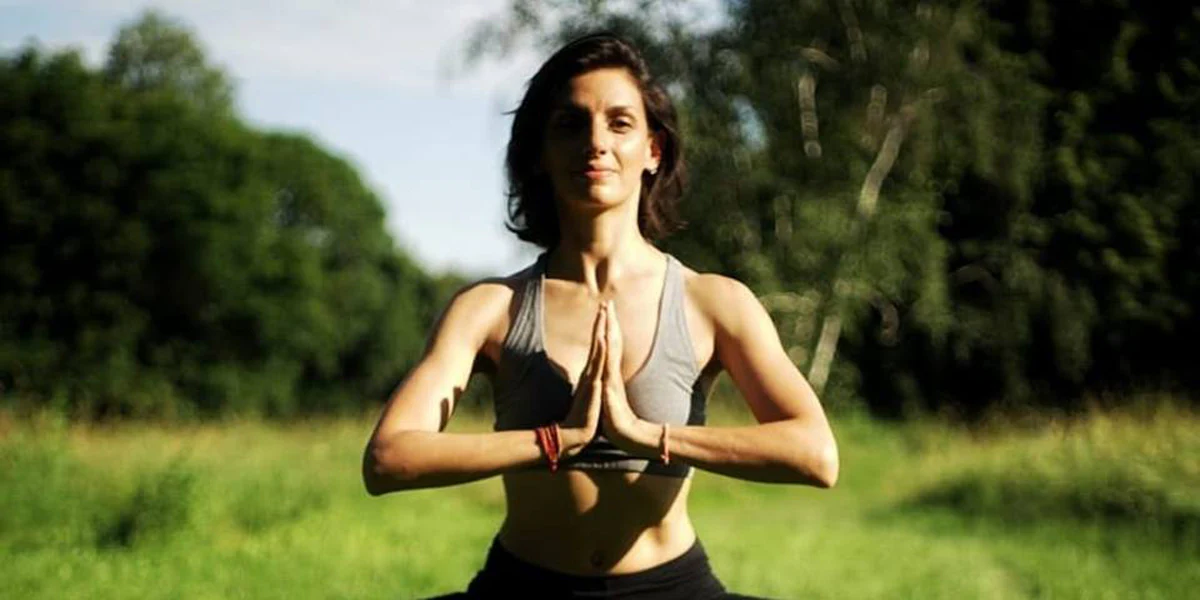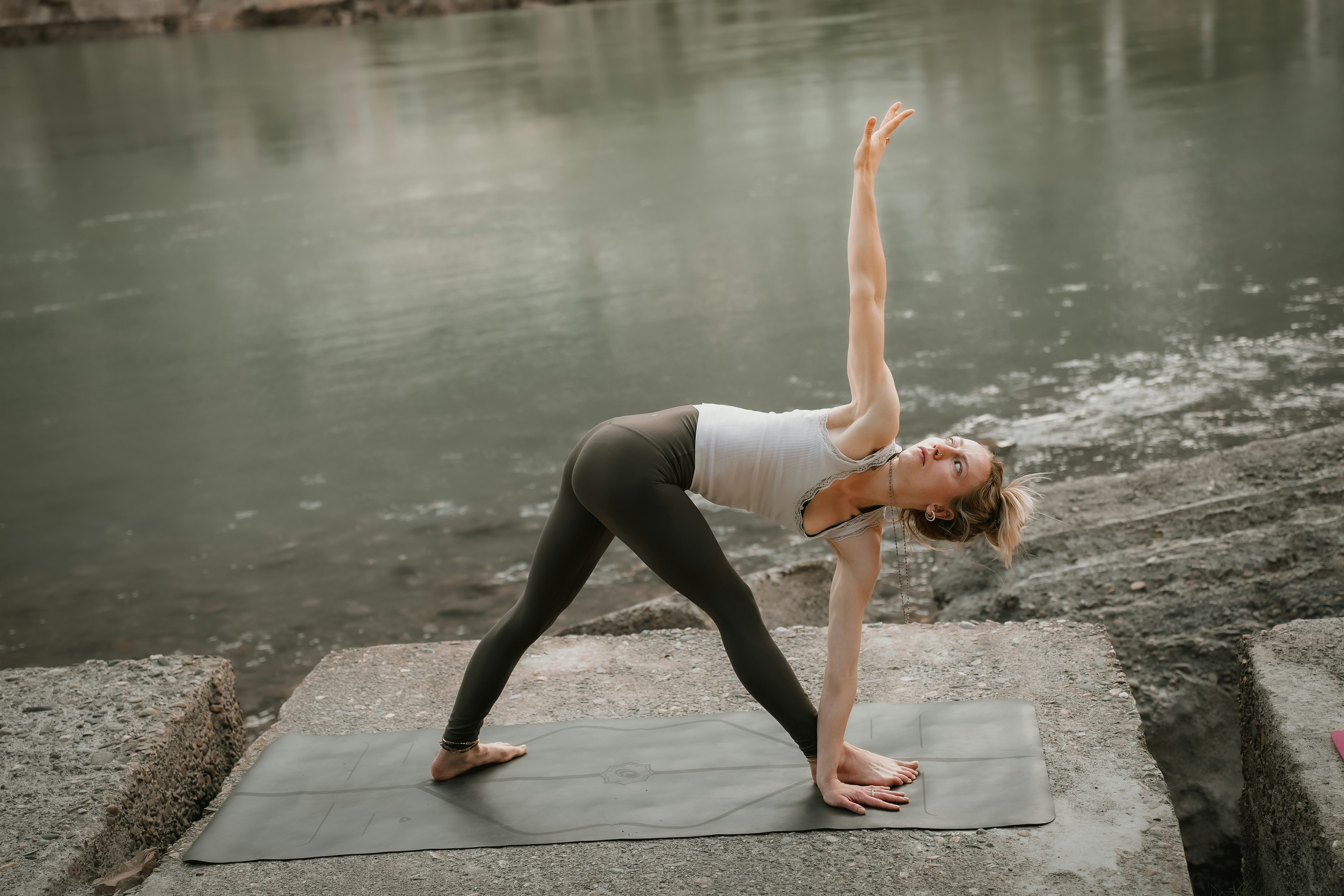Practice
Prenatal Yoga Poses: A Guide for Expecting Mothers

Pregnancy is an exciting and transformative time in a woman’s life, but it also brings about several physical changes that can sometimes be uncomfortable. Yoga, especially prenatal yoga, can be an excellent way to support the body during this period. I’ve experienced firsthand how certain prenatal yoga poses can help alleviate common pregnancy discomforts, improve flexibility, and prepare the body for childbirth. In this article, I’ll take you through some key prenatal yoga poses and share how they can benefit you throughout your pregnancy journey.
Understanding Prenatal Yoga Poses
When you’re pregnant, your body is going through significant changes. Prenatal yoga focuses on specific poses designed to ease these changes while helping to strengthen and stretch key areas of the body. These poses can help with flexibility, balance, and stress reduction. Additionally, breathing exercises taught in prenatal yoga help to calm the mind and reduce anxiety, which can be particularly useful as you prepare for the arrival of your little one.
Unlike regular yoga, prenatal yoga is modified to account for the growth of your baby, which shifts your center of gravity and adds extra strain to various muscle groups. These modifications ensure that both you and your baby stay safe while you reap the benefits of yoga.
Why Prenatal Yoga is Important
One of the primary reasons prenatal yoga poses are beneficial during pregnancy is because they help you maintain flexibility while improving strength and stability. This is especially crucial as your pregnancy progresses. By practicing gentle stretches and postures, your body can maintain its balance despite the physical changes you experience.
Prenatal yoga also improves circulation, helping to prevent swelling and alleviate aches and pains in the body. Many women experience back pain, hip discomfort, and tightness in their shoulders due to the shift in posture. By practicing specific prenatal yoga poses, you can manage these discomforts and even avoid them altogether.
Another major advantage is the improvement in mental well-being. Yoga allows you to connect with your baby, calm your nervous system, and reduce stress. The mental clarity and relaxation gained from consistent practice will help you cope better with the challenges of pregnancy and motherhood.
Prenatal Yoga Poses for Early Pregnancy
The first trimester is a time when many women may feel fatigued or nauseous, so it’s essential to choose gentle yoga poses. As your body adjusts to hormonal changes, it can be a challenge to engage in more demanding physical activity. Fortunately, there are many prenatal yoga poses that can help support your body in this early stage.
Cat-Cow Pose (Marjaryasana-Bitilasana)
Cat-Cow Pose is a gentle yet effective way to increase mobility in your spine and relieve tension in the back. This flowing movement helps improve circulation and flexibility in the spine, which is important as your body begins to make space for your growing baby.
To perform Cat-Cow Pose:
- Start in a tabletop position with your wrists directly under your shoulders and knees under your hips.
- Inhale deeply as you arch your back, dropping your belly toward the mat and lifting your chest and tailbone (Cow Pose).
- As you exhale, round your back, drawing your belly button toward your spine and tucking your chin to your chest (Cat Pose).
- Repeat this flow for several rounds, synchronizing your breath with each movement.
This simple yet effective pose promotes spinal health and is gentle enough to do in the first trimester when you may be feeling fatigued.
Child’s Pose (Balasana)
Child’s Pose is a deeply restorative posture that can help release tension in the back, hips, and shoulders. This gentle stretch allows you to relax and focus on your breath, which can be particularly useful during times of fatigue or discomfort.
To perform Child’s Pose:
- Begin on your hands and knees, with your big toes touching and knees wide apart.
- Slowly sink your hips back toward your heels, extending your arms forward on the mat.
- Allow your forehead to rest on the floor, or place a cushion underneath for support.
- Breathe deeply and allow your body to relax into the pose.
This pose is ideal for taking a moment to rest during your practice and calming your mind.
Prenatal Yoga Poses for the Second Trimester
As you enter your second trimester, your energy may return, and your baby will start growing rapidly. At this stage, it’s important to strengthen your core muscles, improve your balance, and maintain flexibility. Certain prenatal yoga poses can be especially beneficial in helping you feel more stable and strong.
Warrior II (Virabhadrasana II)
Warrior II is an excellent posture for building strength in the legs, hips, and arms. It also opens up the chest and shoulders, helping you counteract the slouching posture that can often develop during pregnancy.
To perform Warrior II:
- Begin standing with your feet wide apart.
- Turn your right foot outward and bend your right knee so it’s aligned with your ankle.
- Stretch your arms out to the sides, palms facing down, while keeping your shoulders relaxed.
- Keep your left leg straight and engage your core to protect your lower back.
- Gaze over your right hand, hold for a few breaths, then switch sides.
Warrior II helps to strengthen the lower body, improves balance, and opens up the chest—important areas for maintaining good posture during pregnancy.
Modified Downward-Facing Dog (Adho Mukha Svanasana)
Downward-Facing Dog is a common yoga pose, but during pregnancy, it can place pressure on your belly. Modifying the pose helps to reduce this pressure while still providing the benefits of the stretch in your shoulders, back, and hamstrings.
To perform Modified Downward-Facing Dog:
- Start on your hands and knees, ensuring your wrists are aligned under your shoulders and knees under your hips.
- Slowly raise your hips toward the ceiling, keeping your knees slightly bent.
- Your hands should be placed shoulder-width apart, and your feet should be hip-width apart.
- Let your head relax between your arms and breathe deeply.
This modification reduces the strain on your body while allowing you to enjoy the benefits of the stretch.
Prenatal Yoga Poses for the Third Trimester
In the final trimester, your body will feel heavier, and you may experience more discomfort due to the size of your baby. Yoga poses during this stage focus more on relaxation, relieving pressure from your lower back, and preparing your body for labor.
Seated Forward Fold (Paschimottanasana)
The Seated Forward Fold is a calming stretch that helps relieve tightness in the back and hamstrings, which can become increasingly uncomfortable as your baby grows.
To perform Seated Forward Fold:
- Sit with your legs extended straight in front of you, keeping your feet flexed.
- Inhale and lengthen your spine, sitting tall.
- As you exhale, slowly hinge at your hips, reaching for your feet or your shins.
- Keep your back as straight as possible, and don’t force the stretch—just allow your body to release.
This pose helps relieve tension in the lower back and improves flexibility in the hamstrings, which can be beneficial as your baby continues to grow.
Squat Pose (Malasana)
Squatting is an excellent way to prepare your body for labor, as it helps to open the hips and encourages flexibility in the pelvic region. It can also help relieve pressure in the lower back and improve circulation in the legs.
To perform Squat Pose:
- Stand with your feet hip-width apart.
- Slowly lower your body down into a squat, ensuring your knees are not extending past your toes.
- Place your hands in prayer position at your chest and gently press your elbows against your inner knees to deepen the stretch.
- Hold the pose for several breaths and focus on your breathing.
Squatting is a great way to improve hip flexibility and can be helpful when preparing for the physical demands of labor.
Conclusion
Prenatal yoga poses are an invaluable tool for maintaining both physical and mental well-being during pregnancy. By practicing these gentle movements, you can alleviate common discomforts, reduce stress, and prepare your body for the birth process. Remember to always listen to your body and consult with your healthcare provider before beginning any new exercise routine. Prenatal yoga offers a safe and supportive way to keep your body strong, flexible, and relaxed throughout this incredible journey of pregnancy.









